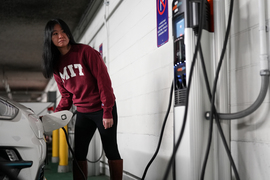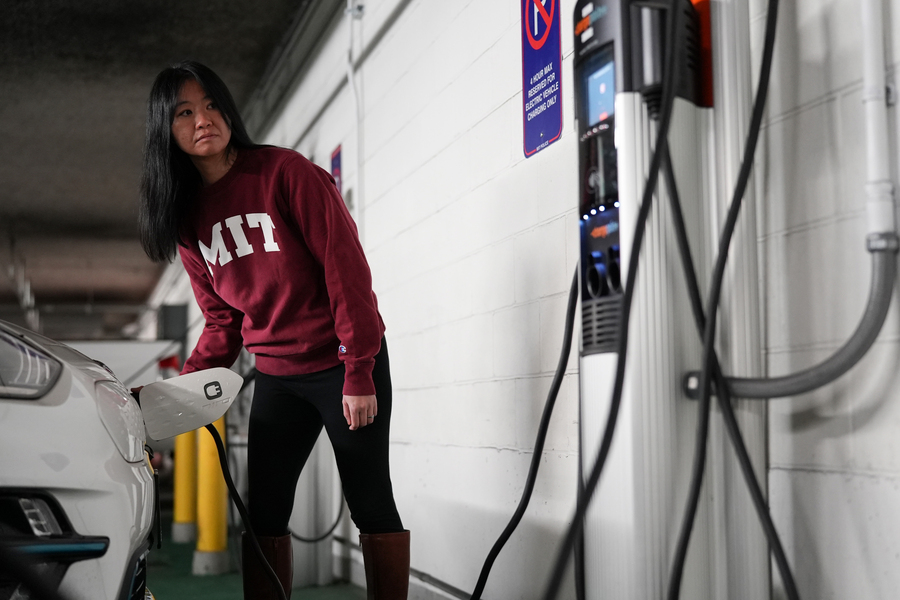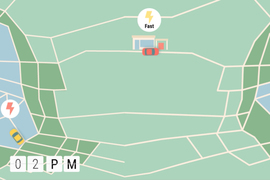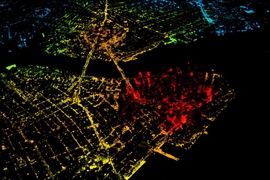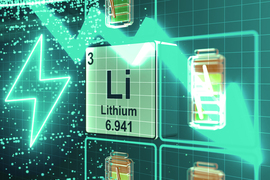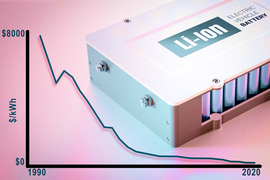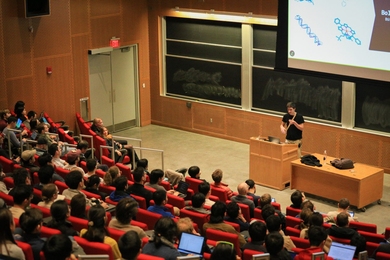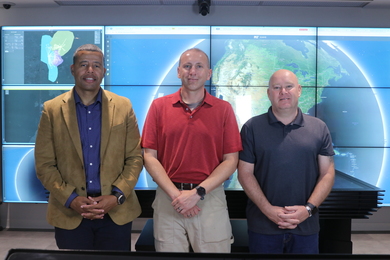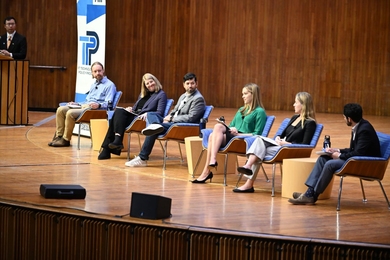National and global plans to combat climate change include increasing the electrification of vehicles and the percentage of electricity generated from renewable sources. But some projections show that these trends might require costly new power plants to meet peak loads in the evening when cars are plugged in after the workday. What’s more, overproduction of power from solar farms during the daytime can waste valuable electricity-generation capacity.
In a new study, MIT researchers have found that it’s possible to mitigate or eliminate both these problems without the need for advanced technological systems of connected devices and real-time communications, which could add to costs and energy consumption. Instead, encouraging the placing of charging stations for electric vehicles (EVs) in strategic ways, rather than letting them spring up anywhere, and setting up systems to initiate car charging at delayed times could potentially make all the difference.
The study, published today in the journal Cell Reports Physical Science, is by Zachary Needell PhD ’22, postdoc Wei Wei, and Professor Jessika Trancik of MIT’s Institute for Data, Systems, and Society.
In their analysis, the researchers used data collected in two sample cities: New York and Dallas. The data were gathered from, among other sources, anonymized records collected via onboard devices in vehicles, and surveys that carefully sampled populations to cover variable travel behaviors. They showed the times of day cars are used and for how long, and how much time the vehicles spend at different kinds of locations — residential, workplace, shopping, entertainment, and so on.
The findings, Trancik says, “round out the picture on the question of where to strategically locate chargers to support EV adoption and also support the power grid.”
Better availability of charging stations at workplaces, for example, could help to soak up peak power being produced at midday from solar power installations, which might otherwise go to waste because it is not economical to build enough battery or other storage capacity to save all of it for later in the day. Thus, workplace chargers can provide a double benefit, helping to reduce the evening peak load from EV charging and also making use of the solar electricity output.
These effects on the electric power system are considerable, especially if the system must meet charging demands for a fully electrified personal vehicle fleet alongside the peaks in other demand for electricity, for example on the hottest days of the year. If unmitigated, the evening peaks in EV charging demand could require installing upwards of 20 percent more power-generation capacity, the researchers say.
“Slow workplace charging can be more preferable than faster charging technologies for enabling a higher utilization of midday solar resources,” Wei says.
Meanwhile, with delayed home charging, each EV charger could be accompanied by a simple app to estimate the time to begin its charging cycle so that it charges just before it is needed the next day. Unlike other proposals that require a centralized control of the charging cycle, such a system needs no interdevice communication of information and can be preprogrammed — and can accomplish a major shift in the demand on the grid caused by increasing EV penetration. The reason it works so well, Trancik says, is because of the natural variability in driving behaviors across individuals in a population.
By “home charging,” the researchers aren’t only referring to charging equipment in individual garages or parking areas. They say it’s essential to make charging stations available in on-street parking locations and in apartment building parking areas as well.
Trancik says the findings highlight the value of combining the two measures — workplace charging and delayed home charging — to reduce peak electricity demand, store solar energy, and conveniently meet drivers’ charging needs on all days. As the team showed in earlier research, home charging can be a particularly effective component of a strategic package of charging locations; workplace charging, they have found, is not a good substitute for home charging for meeting drivers’ needs on all days.
“Given that there’s a lot of public money going into expanding charging infrastructure,” Trancik says, “how do you incentivize the location such that this is going to be efficiently and effectively integrated into the power grid without requiring a lot of additional capacity expansion?” This research offers some guidance to policymakers on where to focus rules and incentives.
“I think one of the fascinating things about these findings is that by being strategic you can avoid a lot of physical infrastructure that you would otherwise need,” she adds. “Your electric vehicles can displace some of the need for stationary energy storage, and you can also avoid the need to expand the capacity of power plants, by thinking about the location of chargers as a tool for managing demands — where they occur and when they occur.”
Delayed home charging could make a surprising amount of difference, the team found. “It’s basically incentivizing people to begin charging later. This can be something that is preprogrammed into your chargers. You incentivize people to delay the onset of charging by a bit, so that not everyone is charging at the same time, and that smooths out the peak.”
Such a program would require some advance commitment on the part of participants. “You would need to have enough people committing to this program in advance to avoid the investment in physical infrastructure,” Trancik says. “So, if you have enough people signing up, then you essentially don’t have to build those extra power plants.”
It’s not a given that all of this would line up just right, and putting in place the right mix of incentives would be crucial. “If you want electric vehicles to act as an effective storage technology for solar energy, then the [EV] market needs to grow fast enough in order to be able to do that,” Trancik says.
To best use public funds to help make that happen, she says, “you can incentivize charging installations, which would go through ideally a competitive process — in the private sector, you would have companies bidding for different projects, but you can incentivize installing charging at workplaces, for example, to tap into both of these benefits.” Chargers people can access when they are parked near their residences are also important, Trancik adds, but for other reasons. Home charging is one of the ways to meet charging needs while avoiding inconvenient disruptions to people’s travel activities.
The study was supported by the European Regional Development Fund Operational Program for Competitiveness and Internationalization, the Lisbon Portugal Regional Operation Program, and the Portuguese Foundation for Science and Technology.
